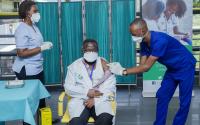[ad_1]
In 2020, the Food and Drug Administration (FDA) was unable to complete more than 1,000 of its drug inspections, putting the quality of drugs sold on the US market at risk, according to a US Government Accountability Office (GAO) testimony report to a House subcommittee yesterday.
Concerns over this backlog have been raised by industry stakeholders as the pandemic has continued, and in GAO’s testimony to the Subcommittee on Agriculture, Rural Development, FDA, and Related Agencies, it underscores its inspection-related recommendations from January while adding further insights into inspection trends and potential barriers.
“Over the years since we first examined this issue, FDA has made significant changes to adapt to the globalization of the pharmaceutical supply chain and has greatly increased the number of inspections it conducts of foreign establishments,” writes GAO. “However, we found in December 2019 that the agency faced many of the same challenges… Subsequently, the outbreak of COVID-19 has added another layer of complexity.”
Table of Contents
Pre-COVID efforts to increase inspections
GAO has been warning about deficiencies in FDA drug inspections for years. In 2009, it flagged inspection quantities, particularly foreign ones, as a high-risk issue, so the FDA worked to increase its output, peaking in 2016 with 1,917 inspections (1,035 foreign, 882 domestic). The proportion of foreign inspections also increased, overtaking domestic ones beginning in 2015 with much of the focus on China (31.2% of 2019’s foreign inspections) and India (17.1%).
From then on, though, inspections flagged. In 2019, the agency reported 977 foreign inspections and 694 domestic ones, for a total of 1,671—a 12.8% overall decrease but still above the 1,500 capacity it projected. Part of the reason for the decline, the FDA said, was because of staffing vacancies.
Then COVID-19 hit, and to protect its workers, the FDA stopped almost all inspections in March 2020. While alternatives were used for partial or substitute inspections, the testimony reiterates the January report’s recommendation of not only conducting a comprehensive assessment of these alternatives but also creating a concrete plan to make up the backlog.
Fifty-two domestic inspections were able to occur from March to October 2020, but investigators conducted only three foreign inspections, each considered critical. One was in India for a preapproval of chloroquine phosphate tablets, but two were for-cause inspections in Canada and Germany for hand sanitizer and the active pharmaceutical ingredient (API) for nifurtimox, respectively. Nifurtimox is a drug used to treat Chagas disease and sleeping sickness.
In March to October of each of the previous 2 years, the FDA has been able to conduct more than 600 foreign inspections.
As of May 2020, the FDA says that 74% of API manufacturers and 54% of finished drugs are made overseas before being sold in the US market.
“If inspections continue to be postponed, the backlog of mandatory inspections this will create could both extend the maximum interval between inspections beyond FDA’s 5-year policy and reduce the resources available in fiscal year 2022 for inspecting the other highest priority establishments identified by its [risk-based] model,” GAO writes, reiterating its January report.
Barriers to smooth, credible inspections
The GAO testimony says that, since the January report came out, the FDA has been working on assessing inspection alternatives. However, announcing inspections up to 12 weeks in advance, another issue the report brought up, has not been resolved in a standardized way.
Pre-COVID, GAO was concerned about the equity of these announcements, because, at the time, the FDA was commonly giving foreign manufacturers up to 12 weeks to prepare while showing up for surprise inspections at domestic manufacturing sites. The FDA said this was partially because foreign inspections required more coordination, but in accordance with GAO’s advice, it earmarked $3.5 million to enable more unannounced foreign inspections in fiscal year 2021.
The implementation of such a pilot program is on hold because of the pandemic, but the GAO testimony clarifies that a few unannounced foreign inspections already happen in normal fiscal years. In fiscal year 2018, investigators from the China office accounted for 27% of FDA inspections in the country and usually gave between 0 to 5 days’ notice, and in the same year, India office investigators accounted for 10% of the country’s inspections and gave the same notice range.
Other barriers the GAO testimony pointed out—inadequate staffing, language barriers, and schedules too packed to allow for investigation extensions—were not connected with pandemic disruptions. For instance, although the FDA in June reaffirmed its goal to fill those vacancies by the end of 2020, openings remain. According to the agency, finding suitable candidates can be difficult in part because it prefers to use people who have 2 to 3 years of experience.
“It will be important for FDA to utilize lessons that it has learned during the COVID-19 pandemic to improve its foreign drug inspection program, including efforts to identify alternative mechanisms to satisfy foreign inspection requirements and plans to address its growing backlog of inspections,” GAO concludes.
[ad_2]
Source link












